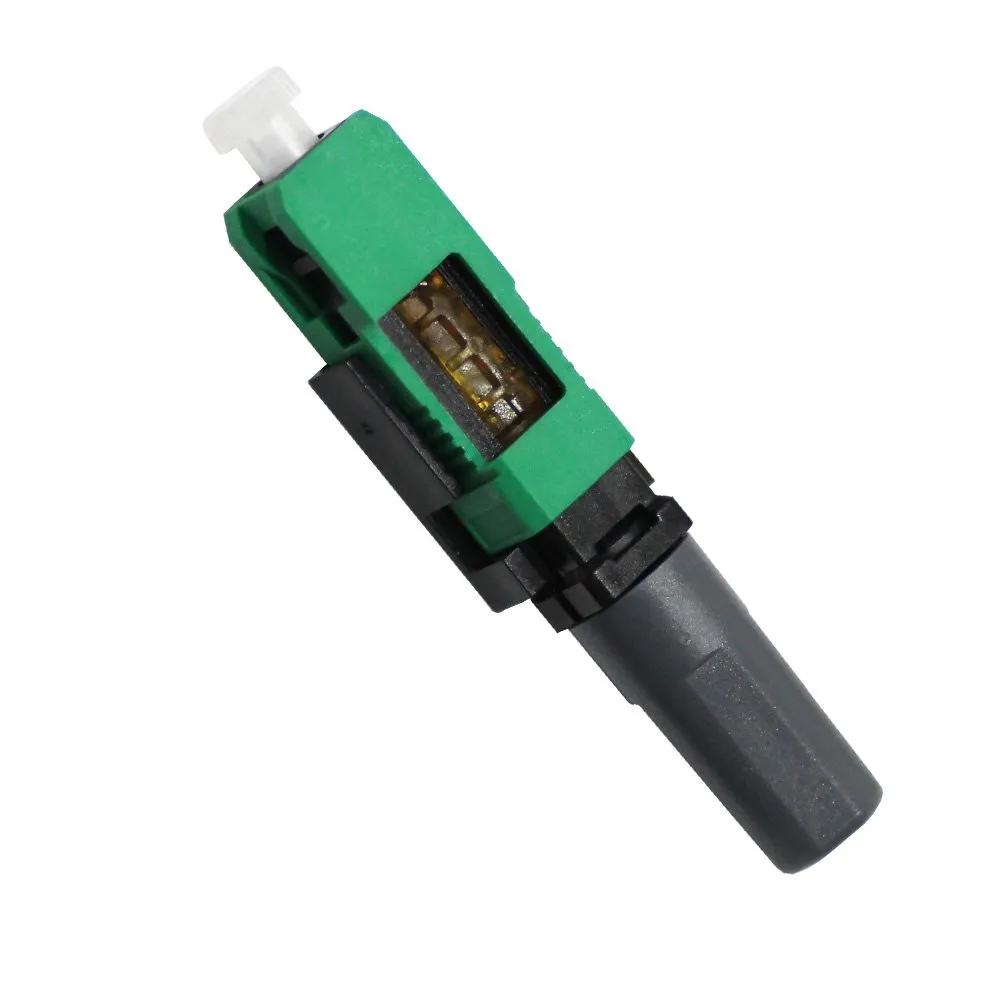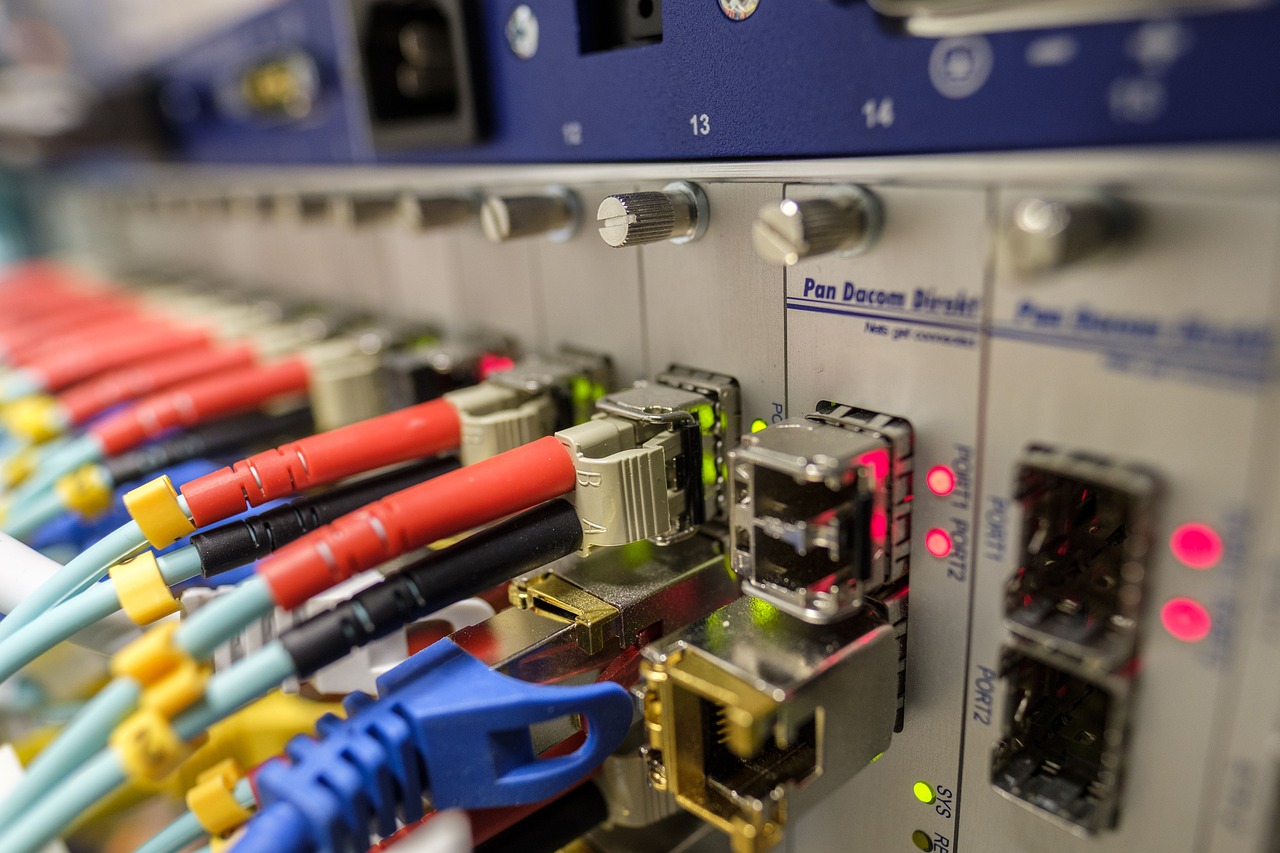Understanding the 2.0×5.0mm SC UPC Single-Mode Field Assembly Optical Connector for Telecom Fiber Interconnection

Why Understanding Optical Connectors is Crucial in Telecom
In the ever-evolving landscape of telecommunications, understanding the significance of optical connectors is paramount. These tiny yet powerful components serve as the backbone of modern communication, playing a pivotal role in ensuring seamless data flow across vast networks.
The Backbone of Modern Communication
At the heart of this technological marvel lies optical fiber, a game-changing medium that has revolutionized data transmission. Unlike traditional copper wiring, optical fiber harnesses the power of light to transmit data over long distances with minimal loss and maximum efficiency. This transformative capability has propelled telecommunications into a new era of speed and reliability.
How Optical Fiber Transforms Data Transmission
By utilizing pulses of light to carry information, optical fiber enables rapid and secure data transfer. This method not only facilitates high-speed communication but also minimizes signal degradation, making it an indispensable asset in modern telecom infrastructure.
Optical Connectors: The Unsung Heroes
While optical fiber rightfully garners attention for its groundbreaking capabilities, optical connectors quietly play a crucial role in maintaining the integrity of these advanced networks. These unassuming components ensure that data flows seamlessly from one optical fiber to another, forming the vital links that underpin reliable communication networks.
Ensuring Seamless Data Flow
The precision and reliability of optical connectors are instrumental in guaranteeing uninterrupted data transmission. Their ability to securely join optical fibers without compromising signal quality is essential for maintaining the high performance and dependability expected in telecom operations.
The Basics of Single-Mode Fiber and Its Importance
In the realm of modern telecommunications, Single-mode fiber stands out as a remarkable technological advancement that has significantly transformed data transmission. Understanding what makes Single-mode fiber special and why it dominates in telecom is crucial for comprehending the foundation of today's communication networks.
What Makes Single-Mode Fiber Special
The Science Behind the Technology
The uniqueness of Single-mode fiber lies in its ability to transmit data using a single mode of light propagation. Unlike multimode fibers, which allow multiple modes of light to travel through the core simultaneously, Single-mode fiber confines the light to a single path, resulting in minimal dispersion and allowing for extended transmission distances without compromising signal integrity.
This precision is achieved through the ultra-thin core of Single-mode fiber, typically around 9 microns in diameter. This slender core restricts light propagation to a single mode, ensuring that transmitted signals reach their destination with exceptional clarity and fidelity.
Why Single-Mode Fiber Dominates in Telecom
Long-Distance and High-Speed Advantages
The dominance of Single-mode fiber in telecom can be attributed to its unparalleled capacity for long-distance data transmission and high-speed communication. By minimizing signal dispersion and loss, this type of fiber facilitates seamless data transfer over extensive distances, making it ideal for interconnecting vast networks across cities, countries, and even continents.
Moreover, the use of a single light mode enables Single-mode fiber to support higher bandwidths, paving the way for rapid data transmission rates essential for modern telecommunications applications. As data demands continue to escalate, the capability of Single-mode fiber to sustain high-speed communication without sacrificing signal quality positions it as an indispensable asset in telecom infrastructure.
A Deep Dive into Field Assembly Optical Connectors
In the realm of telecom fiber interconnection, the 2.0×5.0mm SC UPC Connector plays a pivotal role in ensuring seamless connectivity and efficient data transmission. Understanding the design, features, and significance of this field assembly optical connector is essential for optimizing telecom infrastructure.
Understanding the 2.0×5.0mm SC UPC Connector
Design and Features
The 2.0×5.0mm SC UPC Connector is meticulously engineered to facilitate swift and reliable field assembly, making it an invaluable asset in telecom installations. Its compact form factor and user-friendly design enable technicians to effortlessly terminate optical fibers on-site, minimizing installation time and maximizing operational efficiency.
One of its standout features is the pre-polished ferrule, which eliminates the need for time-consuming polishing procedures during installation. This innovative design streamlines the field assembly process, reducing labor costs and accelerating network deployment.
Moreover, the SC UPC Connector boasts exceptional durability, ensuring long-term performance and reliability in diverse environmental conditions. Its robust construction safeguards against signal degradation and physical damage, guaranteeing consistent data transmission even in challenging settings.
Why Size and Type Matter
The compact dimensions of the 2.0×5.0mm SC UPC Connector are strategically tailored to accommodate space-constrained installation environments commonly encountered in telecom applications. Its standardized size ensures compatibility with various equipment and facilitates seamless integration within existing network infrastructures.
Furthermore, as a single-mode connector, the SC UPC Connector aligns with the dominant fiber type prevalent in long-haul telecom networks. Its compatibility with single-mode fiber enables it to harness the full potential of high-speed data transmission over extended distances, making it an indispensable component in modern telecom interconnections.
The Field Assembly Process Simplified
Step-by-Step Guide
Prepare: Begin by carefully unpacking the field assembly kit and organizing the necessary tools for termination.
Cleave: Use a precision cleaver to create a clean break on the optical fiber without inducing any cracks or imperfections.
Clean: Thoroughly cleanse the fiber end faces to ensure optimal connectivity and prevent contamination that could compromise signal integrity.
Assemble: Align the prepared fibers within the connector's housing, ensuring precise positioning for secure fusion.
Terminate: Complete termination by securing the fibers within the connector using specialized crimping tools or fusion splicing techniques.
Inspect: Conduct meticulous visual inspections to verify proper alignment and connection integrity before finalizing installation.
Tips for Successful Assembly
Ensure meticulous cleaving: Precision cleaving is crucial for achieving low insertion loss and high return loss in field assembly terminations.
Optimize cleanliness: Maintaining pristine fiber end faces through rigorous cleaning procedures is vital for minimizing signal attenuation.
Embrace fusion splicing: Leveraging fusion splicing techniques enhances connection stability and longevity in field assembly scenarios.
By adhering to these best practices, technicians can streamline field assembly processes while optimizing connection quality and network performance.
The Role of Optical Connectors in Fiber Interconnection for Telecom
In the realm of telecom fiber interconnection, the role of optical connectors extends far beyond mere physical connectivity. These unassuming components play a pivotal role in enhancing network reliability and performance while future-proofing telecom infrastructure to adapt to growing data demands.
Enhancing Network Reliability and Performance
The seamless integration of optical connectors within fiber interconnections significantly impacts data transmission, ensuring unparalleled reliability and performance. These connectors serve as the linchpin that fortifies the structural integrity of interconnected optical fibers, mitigating signal loss and distortion to uphold the robustness of communication networks.
The Impact on Data Transmission
The meticulous alignment facilitated by optical connectors minimizes insertion loss, preserving signal strength during data transmission. This precision is instrumental in sustaining high-quality communication across vast distances, bolstering network reliability and fostering consistent performance even under demanding operational conditions.
Furthermore, the seamless fusion enabled by these connectors optimizes connection stability, safeguarding against disruptions that could compromise data integrity. As a result, telecom infrastructure benefits from enhanced resilience and efficiency, empowering seamless data flow critical for modern communication demands.
Future-Proofing Telecom Infrastructure
As the digital landscape continues to evolve at an unprecedented pace, telecom infrastructure must remain adaptable to accommodate burgeoning data demands. The strategic integration of advanced fiber interconnection solutions with robust optical connectors serves as a proactive measure to future-proof telecommunications networks against escalating data requirements.
Adapting to Growing Data Demands
The scalability inherent in fiber interconnection empowered by reliable optical connectors positions telecom infrastructure to seamlessly adapt to surging data demands. By facilitating swift and secure connections between optical fibers, these connectors lay the groundwork for expanding network capacities without compromising performance or reliability.
Moreover, their compatibility with cutting-edge technologies ensures that evolving communication standards can be seamlessly integrated into existing infrastructures. This forward-looking approach equips telecom networks with the agility needed to embrace emerging innovations while upholding stringent performance benchmarks.
In essence, the symbiotic relationship between advanced fiber interconnection solutions and resilient optical connectors not only elevates current network capabilities but also primes them for sustained excellence amidst dynamic technological landscapes.
Final Thoughts on Optical Connectivity in Telecom
As I reflect on the journey through the intricate realm of optical connectivity in telecom, it becomes evident that every facet of this technological landscape is underpinned by a delicate balance of precision and innovation. My personal insights and experiences have illuminated the profound impact of optical connectors and advanced fiber interconnection solutions on the seamless transmission of data within telecommunications networks.
Reflecting on the Journey
Throughout my exploration of optical connectivity in telecom, I've witnessed firsthand the transformative influence of cutting-edge optical connectors and their role in fortifying network reliability. The meticulous fusion facilitated by these connectors has not only elevated data transmission but also underscored their indispensable nature in sustaining high-performance communication infrastructures. Embracing the evolution from traditional copper wiring to the revolutionary prowess of optical fiber has been a testament to the relentless pursuit of efficiency and speed within telecom operations.
My experiences have also shed light on the pivotal significance of future-proofing telecom infrastructure. The dynamic nature of digital communication demands an adaptable and scalable foundation, where resilient optical connectors serve as linchpins for seamless adaptation to escalating data requirements. As I navigate this ever-evolving landscape, it's clear that staying ahead necessitates a forward-looking approach that integrates robust connectivity solutions capable of withstanding future technological innovations.
Looking Ahead: The Future of Telecom
Innovations on the horizon hold promise for further revolutionizing telecom infrastructure. From advancements in fiber optics to breakthroughs in data transmission technologies, the future is poised to usher in a new era of connectivity characterized by unparalleled speed, reliability, and adaptability. As we anticipate these innovations, it's imperative to embrace a mindset that embraces change while upholding stringent performance benchmarks.
The convergence of advanced fiber interconnection solutions with resilient optical connectors sets the stage for a future where telecom networks seamlessly accommodate emerging technologies without compromising operational excellence. This foresight ensures that telecom infrastructure remains at the forefront, ready to harness groundbreaking innovations while delivering uncompromising performance.
See Also
Key Attributes of 3 IN 1 SLIM SC/APC Factory Optical Connector Cable Assembly


